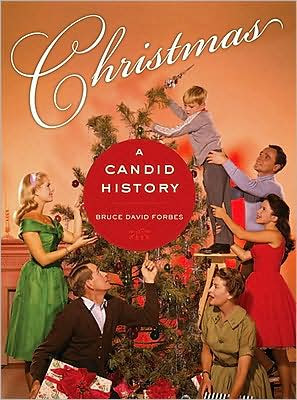Do you know of any good books about the history of Christmas? If so, leave a comment with the book title.
I blogged about this book last year.
Since then I’ve managed to finish the book. If you’ve been reading this blog long enough, you’ll know that I’m not a big fan of non-fiction books in general. It takes me a good while to finish a non-fiction book, if I ever finish it. So, the fact that it took me 2 Christmases to finish this book should in no way put a negative light on the author or the book. It’s a good, well-written book about the history of Christmas. If you’re curious about Santa Claus and why we celebrate Christmas the way we do today, then you should read this book. It’s a fairly short and to-the-point book.
I’ve always been interested in why we celebrate Christmas the way we do now. I guess my curiosity stems from the fact that I was raised not believing in Santa Claus and not celebrating Christmas. I was always taught about the pagan roots of the holiday, but, as I got older, I didn’t really understand how we came to celebrate Christmas the way we do today. For example, I knew Saint Nicolas existed, but, I didn’t know how he came to be known as Santa Claus. I did try to research this subject at the library when I was in my early twenties – all I found was an old, battered book about the early life of Saint Nicolas and that was it.
Anyway, here’s the most amazing facts that I found from this book:
1. Christmas was initially banned when the Pilgrims moved to America. Christmas was actually an extension of pagan worship of the sun god and people always had winter parties and festivals before Christ even came to earth. Winter was cold and dark, so parties using greenery and lights livened things up, but these winter parties were not the innocent Christmas parties that we know of today. People would participate in all kinds of lewd behavior, including drunkeness. That’s one reason why the Puritans did not want to celebrate Christmas when they came to America.
2. The key people who were involved in “sanitizing” Christmas into the celebration we know of today, lived in the 1800’s. We’ve only been celebrating Christmas as we know it today for about 150 years, give or take. These people included (but are not limited to):
Washington Irving
John Pintard
Clement Clarke Moore or Henry Livingston Jr.
Thomas Nast
Charles Dickens
Irving, Pintard and Moore were involved in an elite New York society. This society wanted to “sanitize” Christmas, making it a happy family time.
3. Santa Claus
The Saint Nicholas to Santa Claus transition occurred when Moore’s (or Livingston’s) poem, Twas The Night Before Christmas was published anonymously. The poem caught on and people came to associate Santa Claus with the giving of gifts on Christmas Eve.
Other things about Santa, like his living on the North Pole as well as other characteristics, can be attributed to the drawings made by Thomas Nast for Harper’s Weekly. Nast drew Santa as the plump, bearded man that we know of today. In Moore’s/Livingston’s poem, Santa is tiny, like an elf, not the big jolly man we admire today.
Anyway, that’s just the tip of the iceberg as far as the wealth of Christmas knowledge in this book. I highly recommend it to all who are curious about the roots of the Christmas traditions that we practice today. This book will definitely stay on my “keeper” shelf.
Another notable book that I read years ago is called Battle for Christmas. Although this book was good, too. I found it somewhat scholarly written and bit hard to read. I think Christmas – A Candid History is much easier to read. Not surprisingly, Christmas – A Candid History does use quotes from Battle For Christmas.
So, do you know of any good books about the history of Christmas? If so, leave a comment about the book and the title. I love reading books about this subject.


